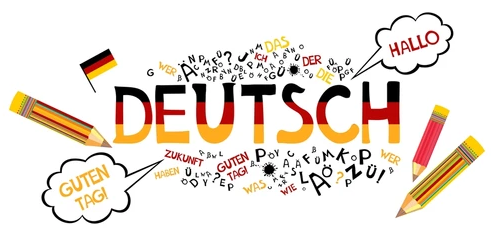Let’s talk about Colombia National Language. Colombia, a vibrant and diverse country in South America, is renowned for its breathtaking landscapes, rich history, and diverse cultural heritage. It is essential to delve into the topic of the national language of Colombia: Spanish. In this article, we will explore the origins, variations, and cultural significance of the Spanish language in Colombia, shedding light on its influence, challenges, and unique characteristics.
Colombia, with its 50 million inhabitants, is a melting pot of cultural diversity, shaped by indigenous heritage, colonial influences, and a complex history. The national language of Colombia is Spanish, a testament to its colonial past under Spanish rule.
History of Colombia National Language
Spanish arrived in Colombia in the early 16th century, accompanying the Spanish conquest and colonization. With time, Spanish became the dominant language, supplanting indigenous languages spoken by the native populations. Today, Spanish is the primary means of communication across the country.
Influence of Indigenous Languages
While Spanish is the official language, it is important to recognize the influence of indigenous languages on the Spanish spoken in Colombia. The country boasts an impressive linguistic heritage, with over 68 indigenous languages still in use. These languages have contributed to the richness and diversity of Colombian Spanish, infusing it with unique vocabulary, syntax, and pronunciation.
Variations of Colombia National Language
Colombian Spanish, like in many other countries, exhibits regional variations. From the Caribbean coast to the Andean highlands and the Pacific lowlands, different dialects and accents color the language. These variations add an intriguing layer to the Colombian linguistic tapestry, reflecting the country’s cultural mosaic.
Importance of Spanish in Colombian Culture
Spanish holds immense importance in Colombian culture. It serves as a unifying force, allowing Colombians from various regions to communicate seamlessly. Spanish is not merely a means of communication; it is deeply ingrained in the national identity, literature, music, and arts of Colombia.
Spanish Language Education in Colombia
Recognizing the significance of Spanish as a cultural and economic asset, Colombia places great emphasis on language education. Spanish is taught in schools across the country, equipping young Colombians with the language skills needed for success in various spheres of life.
Economic Impact of Colombia National Language
Spanish proficiency plays a vital role in Colombia’s economy. As a predominantly Spanish-speaking country, proficiency in the language opens doors to economic opportunities, both domestically and internationally. Colombia’s burgeoning tourism industry benefits greatly from Spanish, attracting visitors from Spanish-speaking countries worldwide.
Spanish Language Tourism in Colombia
Colombia’s linguistic heritage, coupled with its natural wonders and cultural treasures, makes it an attractive destination for language tourism. Language enthusiasts flock to Colombia to learn Spanish and immerse themselves in its diverse culture, contributing to the country’s economy and fostering cross-cultural exchange.
Challenges and Controversies Surrounding Colombia National Language
Bilingualism and Language Policies
While Spanish is the official language, Colombia acknowledges and promotes bilingualism. Efforts are being made to encourage the learning of a second language, particularly English, to enhance Colombians’ global competitiveness. However, implementing bilingual policies comes with its own set of challenges.
Preservation of Indigenous Languages
While Spanish predominates, Colombia also recognizes the importance of preserving indigenous languages. Initiatives are underway to promote the preservation and revitalization of these languages, ensuring their cultural legacy endures. Bilingual education programs and community-led initiatives play a crucial role in this endeavor.
Conclusion
The Spanish language holds a central place in the vibrant tapestry of Colombian culture. It unites the diverse population and serves as a bridge between communities. Colombia’s linguistic heritage, from the influence of indigenous languages to regional variations, adds depth and richness to its Spanish-speaking identity.
As Colombia continues to grow and thrive, it remains committed to fostering language education, celebrating cultural diversity, and preserving indigenous languages. The Spanish language, intertwined with Colombia’s history and aspirations, continues to shape the nation’s present and future.
FAQs
- Is Spanish the only language spoken in Colombia?
No, Colombia is home to numerous indigenous languages, with over 68 still spoken today alongside Spanish.
- Are there any indigenous languages still spoken in Colombia?
Yes, Colombia boasts a rich linguistic heritage, and indigenous languages are an integral part of its cultural diversity.
- How is Spanish education promoted in Colombia?
Spanish education is promoted through schools and universities across the country, emphasizing language skills and literacy.
- Are there any regional variations in Colombian Spanish?
Yes, Colombian Spanish exhibits regional variations, with dialects and accents varying across different regions.
- What efforts are being made to preserve indigenous languages in Colombia?
Colombia has implemented bilingual education programs and community-led initiatives to preserve and revitalize indigenous languages, ensuring their cultural significance endures.
References
- Instituto Caro y Cuervo. (n.d.). Historia de la lengua española en Colombia. Retrieved from https://caroycuervo.gov.co/los-estudios/historia-de-la-lengua-espanola-en-colombia/
- Universidad Nacional de Colombia. (n.d.). El español en Colombia. Retrieved from https://www.lenguas.unal.edu.co/index.php/es/2016-01-07-01-37-22/espanol-en-colombia
- Ministry of Culture of Colombia. (n.d.). Lenguas y culturas indígenas. Retrieved from https://www.mincultura.gov.co/areas/patrimonio/Paginas/lenguas-y-culturas-indigenas.aspx

